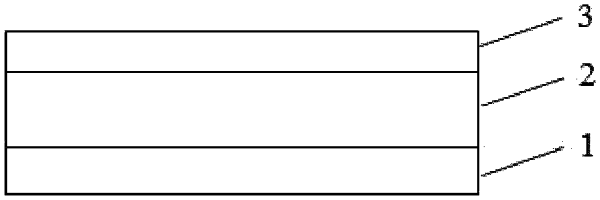|
1. A multicolor electrochromic structure, consisting of a working electrode, an electrolyte and an auxiliary electrode, wherein the electrolyte is distributed between the working electrode and the auxiliary electrode; the working electrode consists of an electrochromic layer; the electrochromic layer consists of a first reflective surface, a second reflective surface, a dielectric layer, a metal reflective layer and a thin metal layer; the first reflective surface and the second reflective surface are arranged face to face in parallel; the dielectric layer is arranged between the first reflective surface and the second reflective surface; the first reflective surface, the second reflective surface and the dielectric layer form an optical cavity; when incident light falls in the optical cavity, a phase shift of a reflected light formed on the first reflective surface and a reflected light formed on the second reflective surface is β=(2π/λ)ñ1d cos θ1, d is a thickness of the dielectric layer, ñ1 is a refractive index of the dielectric layer, λ is a wavelength of the incident light, θ1 is an angle of refraction when the incident light passes through the first reflective surface; the metal reflective layer and the thin metal layer are positioned in parallel on opposite sides of the dielectric layer; wherein the material of the metal reflective layer is selected from gold, silver, copper, tungsten and titanium; and the material of the thin metal layer is selected from Ag, Al, Cu and Ni.
|
